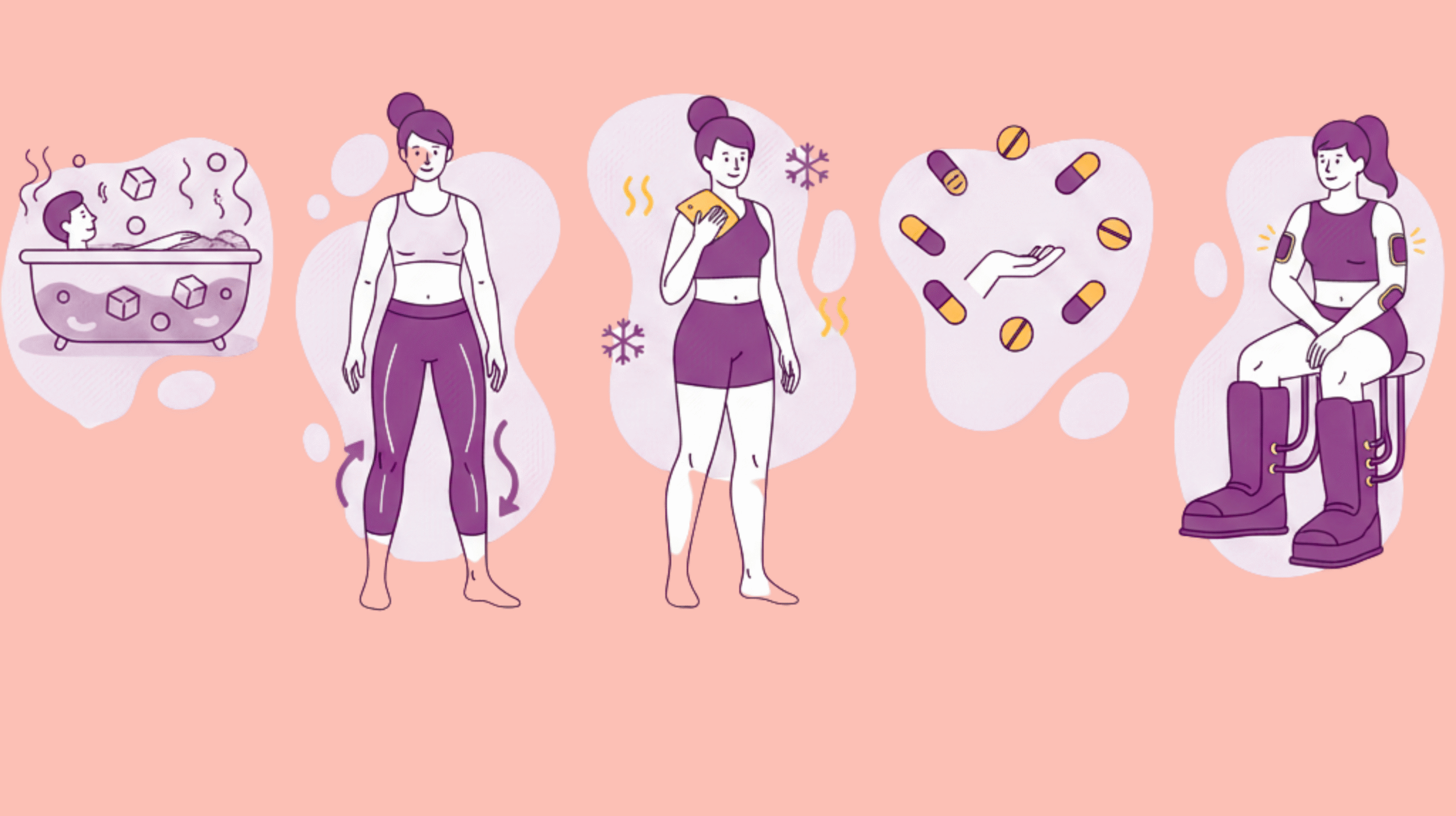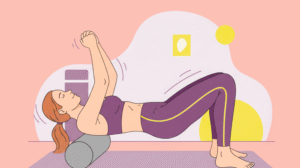Workout frequency and intensity is of great concern to most fitness enthusiasts. Regular workouts will be able to strengthen, build endurance and overall health, but it is equally essential to take rest after strength training. It is through the active process of recovery that your muscles are able to recover, your energy stores are able to be replenished and your body is also able to adapt to the stress caused by exercises.
The famous fitness myth stating that “no pain, no gain,” states that effort has a direct proportionality to your level of pain. Even though vigorous exercise is vital, if you don’t take adequate rest, you risk yourself to persistent fatigue, poor performance as well as injuries.
Recovery is an effective way of healing muscles, boosting athletic performance, and continuing exercise. The understanding of the science of recovery and applying the proven practices will help the athletes improve their performance, decrease soreness, and prevent injuries. This will make their fitness life a success and sustainable one.
Why Post-Workout Recovery Matters?
Muscle Breakdown and Repair
Exercise, especially resistance training and high-intensity workouts, creates microtears in muscle fibers [1]. This process, known as muscle stress, is normal and triggers muscle protein synthesis (MPS); the process by which muscles repair and strengthen. Proper recovery ensures MPS occurs efficiently, allowing muscles to become stronger and more resilient over time.
Without adequate recovery, muscle repair is delayed, which can lead to persistent soreness, reduced strength gains, and an increased risk of injury. Recovery is the period when your body adapts to the stress imposed during training, making it a vital component of the fitness equation.
Injury Prevention
Fatigued muscles and joints are more prone to strains, sprains, and other injuries. Recovery strategies such as active recovery, stretching, proper hydration, and sleep help maintain muscular stability and joint integrity, reducing the likelihood of injury.
Performance Enhancement
Proper recovery allows athletes to train at higher intensities and frequencies without compromising performance. Well-recovered muscles display enhanced strength, endurance, flexibility, and coordination, ultimately leading to better results over time.
Common Challenges in Post-Workout Recovery
1. Delayed Onset Muscle Soreness (DOMS)
DOMS is the stiffness and discomfort that typically develops 12-72 hours after unfamiliar or high-intensity exercise. It occurs due to microtrauma in muscle fibers and the subsequent inflammatory response [2]. While DOMS is a normal response to training, excessive soreness can impair movement, performance, and adherence to exercise routines.
2. Fatigue and Dehydration
Exercise depletes glycogen stores and fluid levels. Fatigue and dehydration can impair cognitive function, reduce coordination, and slow down the muscle repair process [3]. Maintaining hydration is essential for nutrient transport, waste removal, and muscle function.
3. Overtraining Syndrome
Consistently ignoring recovery can lead to overtraining syndrome, characterized by prolonged fatigue, hormonal imbalances, decreased performance, sleep disturbances, and mood swings. Overtraining underscores the need for structured recovery strategies.
4. Inadequate Nutrition or Sleep
Skipping post-workout meals or sleep compromises recovery. Without sufficient protein, carbohydrates, and sleep, muscles cannot repair efficiently, and energy levels remain low. Sleep is crucial for growth hormone release, which is essential for tissue repair and adaptation.
Key Components of Post-Workout Recovery
1. Hydration and Electrolyte Balance
Hydration is fundamental for post-workout recovery. Water is necessary for transporting nutrients to muscles, removing metabolic waste, and maintaining optimal cellular function [4]. During high-intensity or prolonged workouts, electrolytes such as sodium, potassium, and magnesium are lost through sweat, making replenishment vital.
Best recovery drinks:
- Water (for most workouts)
- Coconut water (for natural electrolytes)
- Sports drinks (for intense training or long-duration sessions)
Tip: Aim to drink 16-24 ounces of fluid per pound of body weight lost during exercise [5].
2. Nutrition for Muscle Repair
Nutrition fuels the recovery process by providing building blocks for muscle repair and replenishing glycogen stores.
- Protein: Supplies essential amino acids needed for MPS. Recommended post-workout intake: 20-40 grams of high-quality protein [6]. Sources: whey protein, eggs, lean meats, soy.
- Carbohydrates: Replenish glycogen stores and restore energy. Sources: oats, brown rice, fruits.
- Healthy Fats: Reduce inflammation and support cell repair. Sources: salmon, flaxseeds, walnuts.
Timing of meals: While the anabolic window is not as strict as once believed, consuming a protein and carb-rich meal within 2 hours post-exercise is beneficial.
Recovery Snack Examples:
- Greek yogurt with berries and chia seeds.
- Protein smoothie with banana and spinach.
- Chicken and quinoa salad with vegetables.
3. Sleep and Rest
Sleep is the most critical recovery tool for athletes. During deep sleep, growth hormone is released, promoting muscle repair and protein synthesis. Sleep also regulates cortisol levels, reduces fatigue, and enhances cognitive performance [7].
Sleep Recommendations:
- Adults: 7-9 hours per night.
- Athletes: 8-10 hours per night.
- Incorporate short naps if nighttime sleep is insufficient.
4. Active Recovery
Active recovery involves low-intensity movement to enhance circulation and speed up recovery. Examples include:
- Walking or light jogging.
- Swimming.
- Yoga or Pilates.

Benefits of Active Recovery:
- Reduces DOMS.
- Maintains flexibility.
- Improves nutrient delivery and waste removal.
5. Stretching and Mobility Work
Stretching improves flexibility, joint range of motion, and circulation, which aids recovery.
- Dynamic stretching: Pre-workout, prepares muscles for activity
- Static stretching: Post-workout, reduces stiffness
- Mobility drills: Hip circles, ankle rotations, thoracic spine mobility
Regular stretching and mobility work decrease injury risk and enhance long-term performance.
6. Massage, Foam Rolling, and Physical Therapy
Self-myofascial release techniques like foam rolling help reduce muscle tension and increase blood flow. Massage therapy enhances recovery by decreasing soreness and promoting relaxation.
Physical therapy is important for addressing muscular imbalances or recovering from injury. Foam rolling has been shown to reduce DOMS by up to 30% [8].
Advanced Recovery Techniques
1. Ice Baths and Cryotherapy
Cold exposure reduces inflammation, limits muscle microtrauma, and alleviates soreness. Ice baths and cryotherapy are particularly useful after high-intensity or eccentric training sessions.
2. Compression Garments
Compression clothing supports circulation, reduces swelling, and minimizes DOMS. It is effective for athletes training on consecutive days or during tournaments.
3. Heat Therapy
Heat therapy relaxes muscles, increases blood flow, and reduces stiffness. Contrast therapy, alternating heat and cold, can further enhance recovery.
4. Supplements
Evidence-based supplements include:
- BCAAs: Reduce muscle protein breakdown.
- Creatine: Supports ATP replenishment.
- Omega-3s: Reduce inflammation.
- Antioxidants: Support cellular repair.
Note: Consult a nutritionist or sports medicine professional for dosage guidance.
5. Emerging Recovery Technologies
- Infrared therapy: Enhances circulation and tissue repair.
- Pneumatic recovery boots: Improve venous return and reduce swelling.
- Electrical muscle stimulation (EMS): Activates muscles to enhance recovery without fatigue [9].
Mistakes to Avoid in Post-Workout Recovery
1. Skipping Cool-Down Routines
Many athletes finish intense workouts and immediately stop activity. Skipping cool-downs prevents gradual heart rate normalization and limits the removal of metabolic waste, which can contribute to soreness and stiffness.
2. Inadequate Hydration
Dehydration slows nutrient delivery, reduces oxygen transport to muscles, and prolongs fatigue. Failing to replenish fluids and electrolytes can impair muscle repair and overall recovery.
3. Over-Reliance on Supplements
While supplements like BCAAs, creatine, and omega-3s can aid recovery, they cannot replace balanced nutrition, hydration, or sleep. Over-reliance may lead to neglecting foundational recovery strategies.
4. Returning to Training Too Soon
Exercising before muscles have fully recovered increases injury risk, reduces performance, and delays progress. Adequate rest between sessions is critical, especially after high-intensity or heavy-load workouts.
5. Ignoring Sleep and Nutrition
Sleep and nutrition are the cornerstones of recovery. Neglecting proper meals or sufficient rest limits muscle repair, slows glycogen replenishment, and increases fatigue.
6. Neglecting Mobility and Stretching
Skipping stretching and mobility work reduces flexibility, joint range of motion, and circulation, increasing the likelihood of stiffness and injuries over time.
7. Failing to Listen to Your Body
Ignoring signs of excessive soreness, fatigue, or discomfort can lead to overtraining. Recovery should be guided by how your body feels, not just by a schedule.
8. Overtraining Specific Muscle Groups
Continuously stressing the same muscles without adequate rest prevents proper repair and can cause chronic injuries like tendinitis or muscle strains.
9. Excessive Use of Cold or Heat Therapy
While ice baths and heat therapy can help recovery, overuse may blunt natural adaptation and slow muscle growth if applied incorrectly or too frequently.
10.Poor Post-Workout Nutrition Choices
Consuming high-sugar, processed foods instead of protein- and carb-rich recovery meals impairs glycogen replenishment and muscle repair [10].
11. Neglecting Mental Recovery
Stress and poor mental health affect cortisol levels, sleep quality, and hormonal balance, all of which impact physical recovery. Mindfulness, meditation, or relaxation techniques can improve overall recovery.
12. Ignoring Pre-Existing Injuries or Pain
Training with unresolved injuries or soreness can worsen the condition. Seeking professional guidance ensures safe and effective recovery strategies.
13. Inconsistent Recovery Routine
Sporadic or inconsistent recovery habits reduce effectiveness. Recovery practices like hydration, sleep, nutrition, and stretching should be integrated consistently into your fitness routine.
Creating a Personalized Recovery Routine
Recovery should be tailored to individual fitness level, age, and training goals:
- Beginners: Require longer rest and lighter activity post-workout.
- Advanced athletes: Integrate active recovery, advanced techniques, and wearable tracking.
- Use recovery journals or devices to monitor soreness, fatigue, and sleep quality.
- Balance training intensity with adequate rest to prevent overtraining.
Sample Routine:
- Immediately post-workout: Hydrate and have a light snack
- 1-2 hours post-workout: Stretching + mobility drills
- Evening: 7-9 hours of sleep
- Next day: Light active recovery (walking, yoga, swimming)
Conclusion
Post-exercise recovery is a key ingredient to long-term success, performance and injury prevention. Active recovery, stretching, a good diet, sufficient sleep, hydration, and innovative methods can help muscles recover more quickly. It is important to get better results for faster recovery. Exercise along with rest is the ultimate key to recovery.
Muscle pain is common after workouts. If you want to know more techniques for faster muscle recovery, check these out:
Frequently Asked Questions:
1. What is the best way to speed up muscle recovery after a workout?
Incorporate a combination of hydration, balanced post-workout nutrition (protein + carbs), active recovery, stretching, massage or foam rolling, and adequate sleep. Supplements like BCAAs or omega-3s can support recovery but should complement, not replace, holistic methods.
2. How much rest do muscles need after exercising?
Muscles generally need 24-72 hours to recover depending on intensity, type of exercise, and individual factors. Smaller muscle groups recover faster, while high-intensity or eccentric training may require longer.
3. Do I need protein immediately after working out for recovery?
While immediate protein intake is beneficial, studies show that consuming protein within a 2-hour post-workout window is effective for muscle repair. The key is total daily protein intake, not only timing.
4. Are ice baths effective for post-workout recovery?
Ice baths reduce inflammation, swelling, and DOMS, particularly after high-intensity or eccentric workouts. They are effective for acute recovery but should be used judiciously, as excessive cold may impede adaptation.
5. Can stretching prevent muscle soreness after workouts?
Stretching improves flexibility and circulation but does not eliminate DOMS completely. It helps in maintaining mobility, reducing stiffness, and supporting long-term joint health.
References
- Kumar, M. S., & Vinayakan, K. (2024). The science of strength: Understanding the principles of effective weight training. Indo American Journal of Multidisciplinary Research and Review, 8(2), 149-159. https://www.researchgate.net/profile/Kasi-Vinayakan/publication/387603634_THE_SCIENCE_OF_STRENGTH_UNDERSTANDING_THE_PRINCIPLES_OF_EFFECTIVE_WEIGHT_TRAINING/links/67756a6e00aa3770e0cce9a6/THE-SCIENCE-OF-STRENGTH-UNDERSTANDING-THE-PRINCIPLES-OF-EFFECTIVE-WEIGHT-TRAINING.pdf
- MacIntyre, D. L., Reid, W. D., & McKenzie, D. C. (1995). Delayed muscle soreness: the inflammatory response to muscle injury and its clinical implications. Sports medicine, 20(1), 24-40. https://doi.org/10.2165/00007256-199520010-00003
- Adan, A. (2012). Cognitive performance and dehydration. Journal of the American College of Nutrition, 31(2), 71-78. https://www.tandfonline.com/doi/abs/10.1080/07315724.2012.10720011
- Lorenzo, I., Serra-Prat, M., & Yébenes, J. C. (2019). The role of water homeostasis in muscle function and frailty: a review. Nutrients, 11(8), 1857. https://doi.org/10.3390/nu11081857
- Roy, B. (2013). Exercise and Fluid Replacement. ACSM’s Health & Fitness Journal, 17(4), 3. DOI: 10.1249/FIT.0b013e318296bc4b
- Healthline (2024). Post-Workout Nutrition: What to Eat After a Workout. Retrieved from: https://www.healthline.com/nutrition/eat-after-workout#macronutrients [Viewed on 3 November 2025]
- Niu, S. F., Chung, M. H., Chen, C. H., Hegney, D., O’Brien, A., & Chou, K. R. (2011). The effect of shift rotation on employee cortisol profile, sleep quality, fatigue, and attention level: a systematic review. Journal of Nursing Research, 19(1), 68-81. DOI: 10.1097/JNR.0b013e31820c1879
- Pearcey, G. E., Bradbury-Squires, D. J., Kawamoto, J. E., Drinkwater, E. J., Behm, D. G., & Button, D. C. (2015). Foam rolling for delayed-onset muscle soreness and recovery of dynamic performance measures. Journal of athletic training, 50(1), 5-13. https://nata.kglmeridian.com/view/journals/attr/attr-overview.xml
- Pinar, S., Kaya, F., Bicer, B., Erzeybek, M. S., & Cotuk, H. B. (2012). Different recovery methods and muscle performance after exhausting exercise: comparison of the effects of electrical muscle stimulation and massage. Biology of sport, 29(4), 269-275. https://www.termedia.pl/Original-paper-DIFFERENT-r-nRECOVERY-METHODS-AND-MUSCLE-PERFORMANCE-AFTER-EXHAUSTING-EXERCISE-COMPARISON-OF-THE-EFFECTS-OF-ELECTRICAL-MUSCLE-STIMULATION-AND-MASSAGE,78,23405,0,1.html
- Volek, J., & Campbell, A. (2007). Men’s Health TNT Diet: The Explosive New Plan to Blast Fat, Build Muscle, and Get Healthy in 12 Weeks. Rodale. https://books.google.com/books?hl=en&lr=&id=7H67fU3WOeEC&oi=fnd&pg=PR9&dq



















